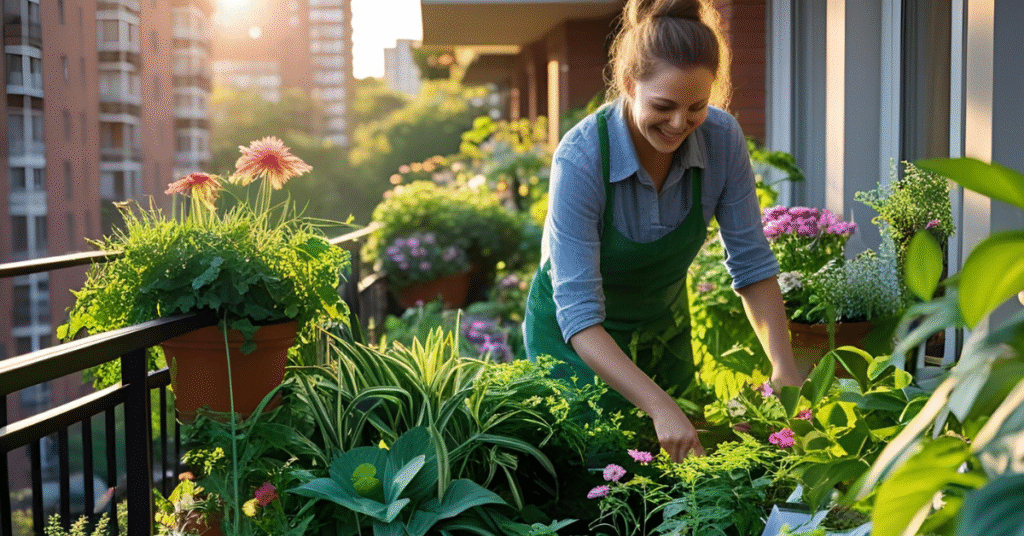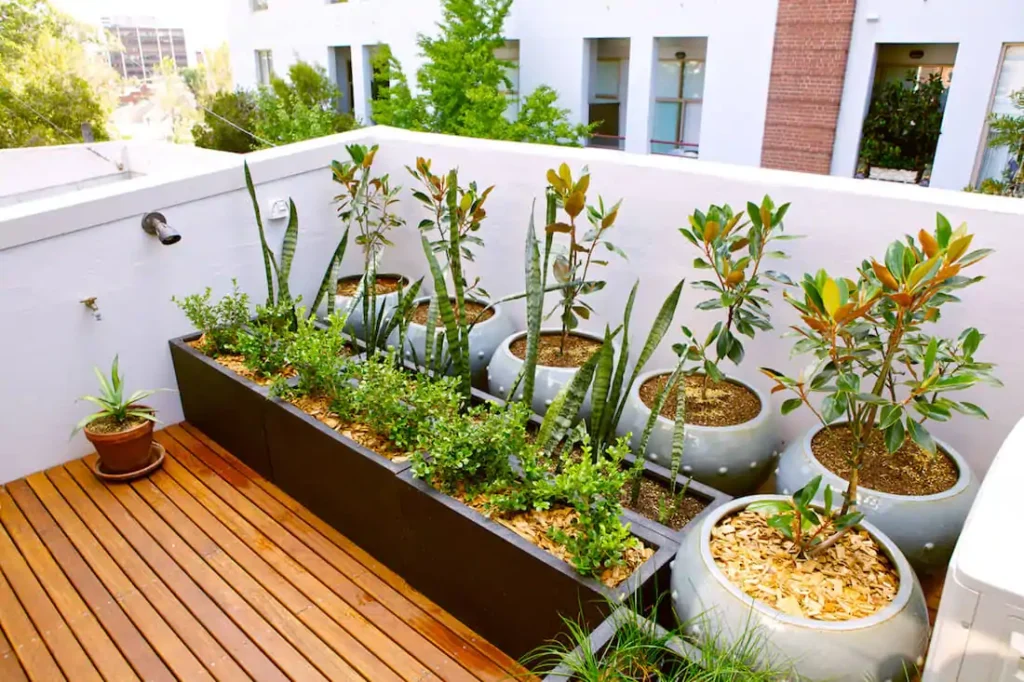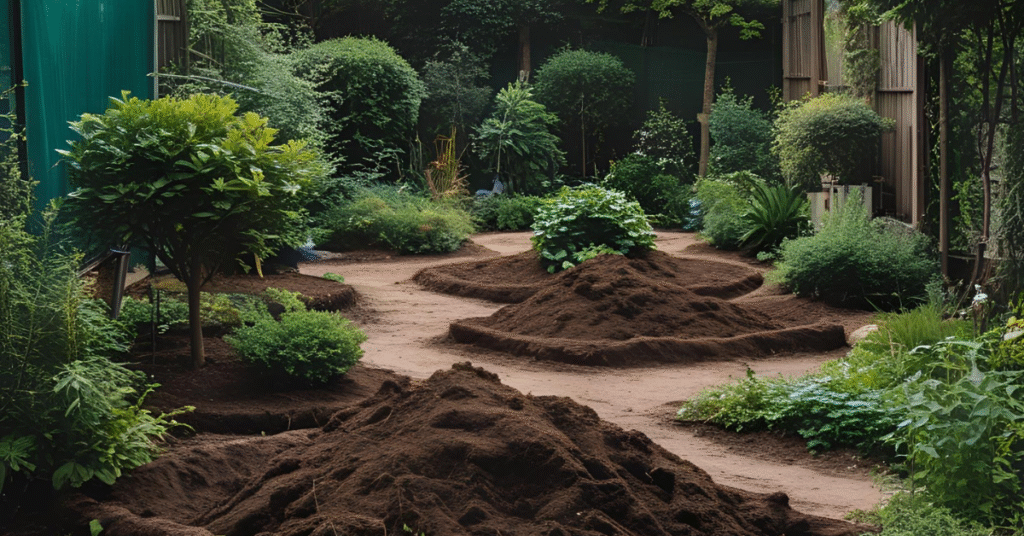Vertical gardening has revolutionized how we approach growing plants in limited spaces, offering an innovative solution that maximizes productivity while minimizing footprint. Whether you’re working with a small balcony, urban patio, or want to optimize your backyard space, vertical gardening techniques can help you create a thriving garden that grows upward instead of outward.
In this comprehensive guide, we’ll explore everything from DIY tower systems and hydroponic setups to wall planters and trellis designs. You’ll discover how to grow tomatoes, strawberries, and vegetables in vertical containers, troubleshoot common problems, and create sustainable growing systems that produce abundant harvests in minimal space.
What You’ll Learn
- Vertical gardening fundamentals and benefits
- DIY systems and budget-friendly solutions
- Best plants for vertical growing
- Hydroponic tower setups
- Wall planter installation
- Troubleshooting common issues
What is Vertical Gardening?
Vertical gardening is the practice of growing plants upward using various support structures, containers, and systems rather than spreading them horizontally across the ground. This innovative approach transforms walls, fences, and vertical spaces into productive growing areas, making it perfect for urban environments and small spaces.
Unlike traditional horizontal gardening, vertical gardening utilizes three-dimensional space efficiently. You can create tower gardens, wall-mounted planters, hydroponic systems, and trellis structures that support climbing plants while dramatically increasing your growing capacity within the same footprint.

Key Benefits of Vertical Gardening
- Space Efficiency: Grow 240 times more plants in the same area compared to traditional methods
- Water Conservation: Uses up to 98% less water through targeted irrigation systems
- Easier Maintenance: Plants at eye level reduce bending and make harvesting convenient
- Better Plant Health: Improved air circulation reduces disease and pest problems
- Extended Growing Season: Controlled environments allow year-round production
DIY Vertical Garden Systems on a Budget
Creating an effective vertical garden doesn’t require expensive commercial systems. With some creativity and basic materials, you can build productive vertical growing systems for a fraction of the cost of pre-made alternatives.
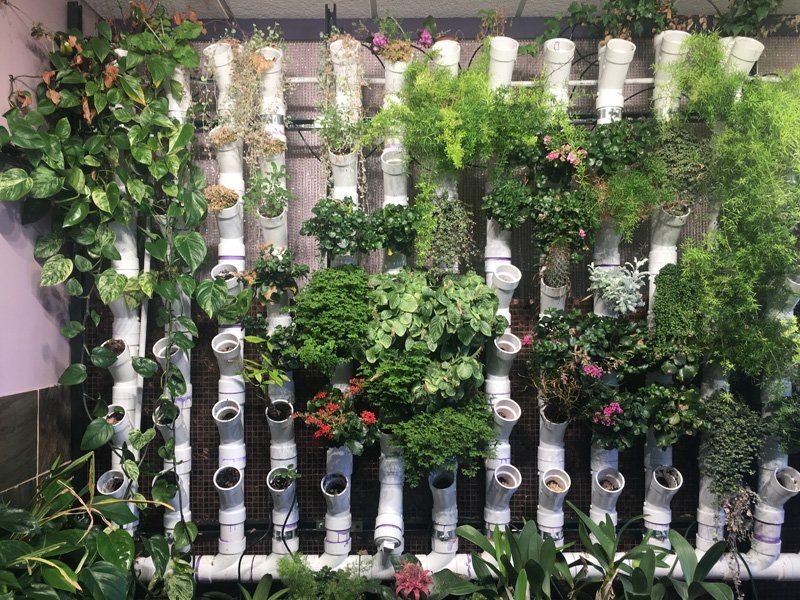
Budget-Friendly Material Options
Cattle Panels ($30-40)
Sturdy wire panels perfect for creating arched trellises. One panel can support multiple climbing plants and lasts for years.
Welded Wire ($35 for 50ft)
Versatile option that can be cut to size and attached to T-posts for custom vertical growing solutions.
Wooden Pallets ($0-15)
Repurposed pallets make excellent vertical planters. Remove center boards and add landscape fabric for planting pockets.
T-Posts ($4 each)
Essential support structures that provide stability for wire panels and climbing systems.
Simple DIY Tower Garden Instructions
- Cut a 4-foot piece of welded wire or use a cattle panel section
- Form into a cylinder and secure with zip ties
- Line the bottom with landscape fabric
- Fill with quality potting mix, leaving holes for plants
- Plant seedlings through the wire openings
- Install drip irrigation or hand-water from the top
Hydroponic Tower Systems
Hydroponic vertical gardening represents the cutting edge of space-efficient growing, eliminating soil while providing precise nutrient delivery to plants. These systems are particularly effective for leafy greens, herbs, and smaller fruiting plants.
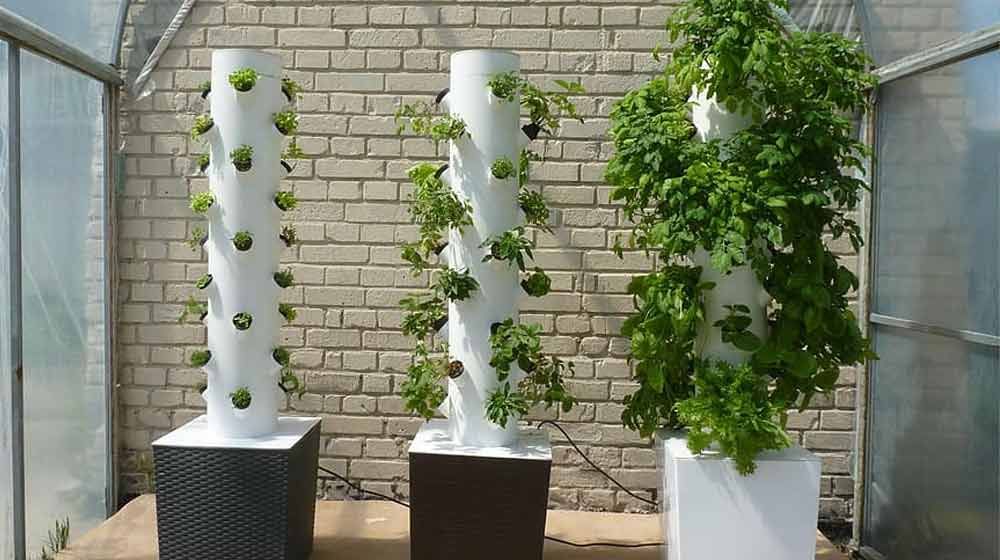
Types of Hydroponic Tower Systems
Nutrient Film Technique (NFT) Towers
Water with dissolved nutrients flows down through channels, providing continuous feeding to plant roots. Ideal for herbs and leafy greens.
Deep Water Culture (DWC) Towers
Plant roots sit in aerated nutrient solution. Great for larger plants like tomatoes and peppers that need more root space.
Aeroponic Towers
Nutrient solution is misted directly onto suspended roots. Provides maximum oxygen to roots for faster growth rates.
Essential Hydroponic Tower Components
- Water reservoir (5-20 gallons)
- Submersible water pump
- Timer for irrigation cycles
- Growing medium (perlite, clay pebbles)
- Net pots for plant support
- pH testing kit and adjusters
- Nutrient solution (NPK balanced)
- Air pump for oxygenation
Wall Planters and Container Systems
Wall-mounted vertical gardens bring greenery directly to your living spaces while maximizing every square inch of available area. These systems work excellently for herbs, flowers, and smaller vegetables, making them perfect for balconies, patios, and indoor spaces.
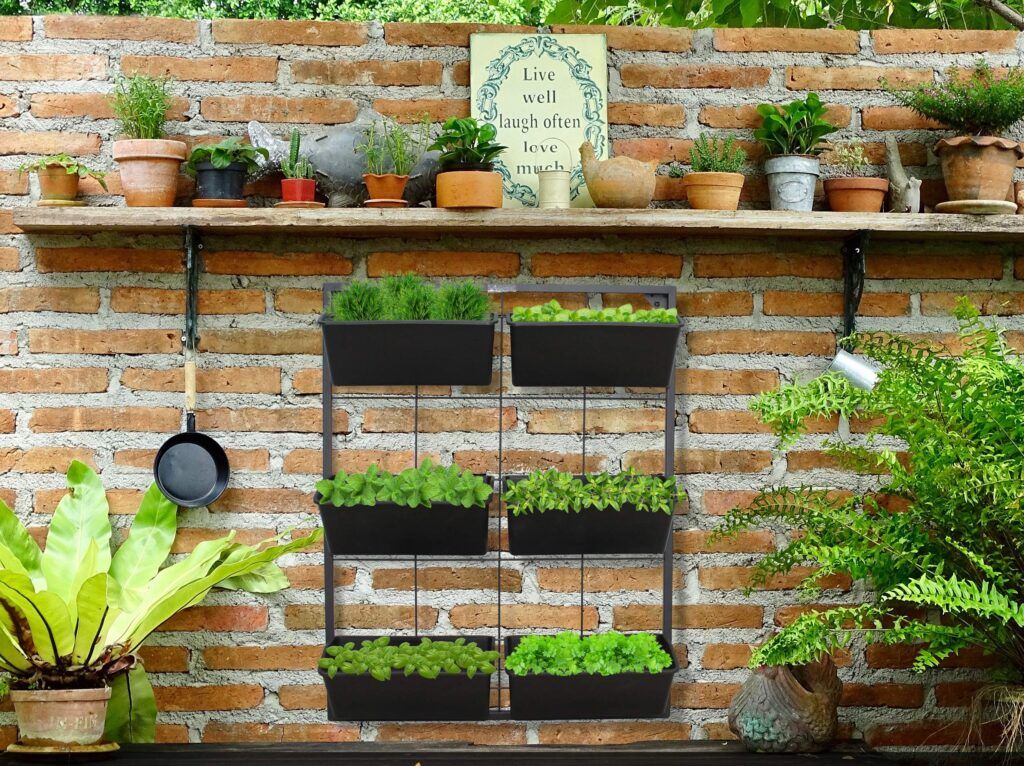
Popular Wall Planter Designs
Modular Pocket Systems
Stackable pockets that can be arranged in various configurations for custom layouts.
Horizontal Rail Systems
Planters that slide onto horizontal rails, allowing easy rearrangement and maintenance.
Tiered Shelf Systems
Multiple levels of planters that create a cascading garden effect on walls.
Important Installation Considerations
- Weight Capacity: Ensure wall can support 40-60 lbs per square foot when fully planted and watered
- Drainage: Install proper drainage to prevent water damage to walls and foundations
- Light Exposure: Position systems to receive adequate sunlight or supplement with grow lights
- Accessibility: Keep all planters within comfortable reach for maintenance and harvesting
Best Plants for Vertical Gardening
Success in vertical gardening depends heavily on selecting the right plants for your system and environment. Different plants have varying requirements for support, space, light, and nutrients, making plant selection crucial for optimal results.
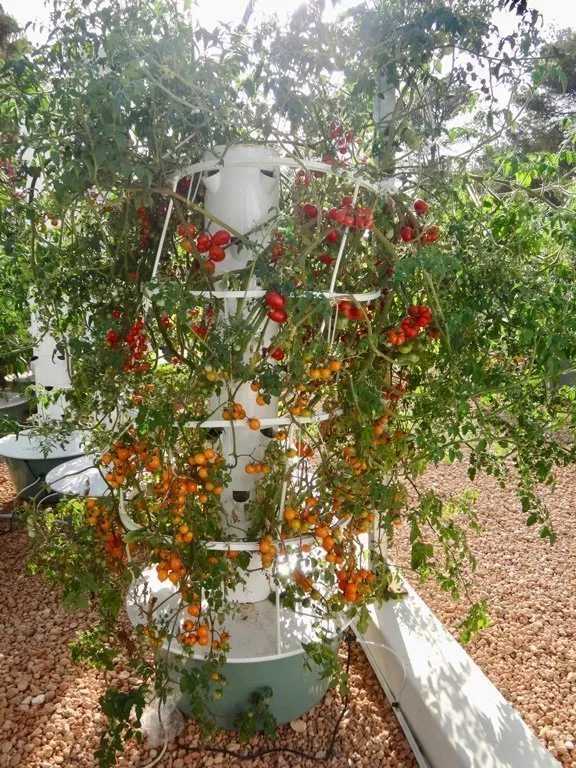
Top Vegetable Choices for Vertical Gardens
Tomatoes
Choose compact varieties like Tiny Tim, Cherry, or Roma. Provide strong support and regular pruning for best results.
Growing Tip: Use determinate varieties in containers, indeterminate for tall towers
Strawberries
Excellent for hanging baskets and tower systems. Day-neutral varieties produce fruit continuously.
Growing Tip: Allow runners to cascade for natural propagation
Leafy Greens
Lettuce, spinach, kale, and arugula grow quickly and don’t require deep root systems.
Growing Tip: Plant every 2 weeks for continuous harvest
Peppers
Compact pepper varieties thrive in vertical systems. Choose smaller fruited types for best support.
Growing Tip: Stake early to prevent breakage from fruit weight
Herbs
Basil, oregano, thyme, and parsley are perfect for vertical gardens and provide continuous harvests.
Growing Tip: Pinch flowers to encourage leaf production
Climbing Vegetables
Beans, peas, and cucumbers naturally climb and make excellent use of vertical space.
Growing Tip: Install sturdy trellis system before planting
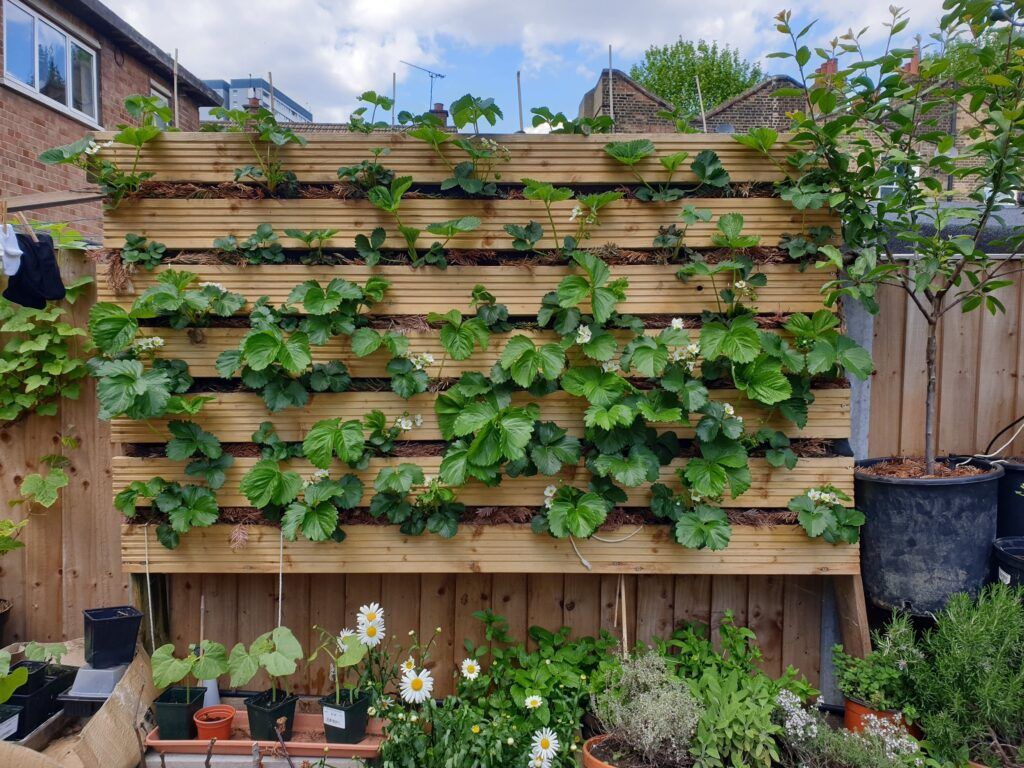
Troubleshooting Common Vertical Gardening Issues
Even experienced gardeners encounter challenges with vertical systems. Understanding common problems and their solutions helps maintain healthy, productive gardens throughout the growing season.
Water Management Problems
Problem: Uneven Watering
Top plants receive too much water while bottom plants remain dry.
Solution: Install drip irrigation with individual emitters for each plant, or use self-watering systems with reservoir capacity.
Problem: Root Rot
Overwatering in containers without proper drainage leads to root rot and plant death.
Solution: Ensure all containers have drainage holes, use well-draining potting mix, and allow soil to dry between waterings.
Structural and Support Issues
Problem: System Instability
Heavy plants or wind cause vertical structures to lean or collapse.
Solution: Use proper anchoring systems, guy-wires for tall structures, and calculate weight loads before installation.
Problem: Plant Support Failure
Heavy fruiting plants break their supports or bend the growing structure.
Solution: Install additional support brackets, use stronger materials like galvanized steel, and provide individual plant stakes.
Plant Health and Growth Issues
Light Competition
Upper plants shade lower ones, causing poor growth below.
Fix: Space plants properly, use reflective surfaces, or add supplemental lighting.
Pest Concentration
Dense plantings create ideal conditions for pest outbreaks.
Fix: Improve air circulation, regular monitoring, and integrated pest management.
Maximizing Productivity in Small Spaces
The key to successful vertical gardening lies in optimizing every aspect of your system for maximum productivity. By implementing strategic planning and efficient techniques, you can achieve remarkable yields from minimal space.
Succession Planting
Plant new crops every 2-3 weeks for continuous harvests throughout the season.
Companion Planting
Combine plants with different growth habits and nutrient needs in the same system.
Resource Efficiency
Implement water recycling, composting, and nutrient cycling within your system.
Advanced Productivity Tips
- Microgreens Integration: Grow quick-harvest microgreens in gaps between larger plants
- Vertical Crop Rotation: Move plants to different levels as they mature for optimal light exposure
- Season Extension: Use row covers, cold frames, or growing lights to extend productive seasons
- Smart Plant Selection: Choose high-value, space-efficient crops like herbs and cherry tomatoes
Frequently Asked Questions About Vertical Gardening
What problem does vertical gardening solve?
Vertical gardening solves the critical problem of limited growing space by utilizing vertical surfaces instead of expanding horizontally. Modern vertical farming techniques can use 98% less water and 99% less land compared to traditional farming methods while producing crop yields up to 240 times greater through year-round growing and efficient space utilization.
What are the best plants for vertical gardening beginners?
Beginners should start with easy-to-grow plants like herbs (basil, oregano, thyme), leafy greens (lettuce, spinach, kale), strawberries, and compact vegetables like cherry tomatoes and peppers. These plants are forgiving, have shallow root systems, and provide quick results to build confidence.
How much does it cost to start vertical gardening?
DIY vertical gardening can start as low as $30-50 using materials like cattle panels ($30-40) and T-posts ($4 each). Pre-made vertical garden systems range from $100-500, while commercial hydroponic towers can cost $300-1000+. The investment often pays for itself through reduced grocery costs and higher yields.
Are there any drawbacks to vertical gardening?
Potential drawbacks include higher initial setup costs for commercial systems, need for specialized equipment like grow lights and irrigation systems, weight-bearing considerations for wall-mounted installations, and potentially more frequent watering requirements. However, these challenges are manageable with proper planning and often offset by the benefits.
What are the main techniques of vertical gardening?
The three main vertical gardening techniques are: 1) Terracing – creating stepped levels for different plants, 2) Trellising – using support structures for climbing plants like beans, peas, and tomatoes, and 3) Tumbling – allowing plants like strawberries and trailing herbs to cascade downward from elevated containers.
Can vertical gardens work indoors?
Yes, vertical gardens work excellently indoors with proper lighting, ventilation, and plant selection. Indoor systems are ideal for herbs, leafy greens, and smaller vegetables. LED grow lights can supplement natural light, and many plants thrive in controlled indoor environments year-round.
How often should I water my vertical garden?
Watering frequency depends on your system type, plant selection, and environmental conditions. Container systems typically need daily watering in hot weather, while hydroponic systems maintain consistent moisture automatically. Monitor soil moisture levels and adjust accordingly – most plants prefer consistent moisture without waterlogging.
Transform Your Space with Vertical Gardening
Vertical gardening opens up endless possibilities for growing fresh food and beautiful plants regardless of your space limitations. Whether you choose a simple DIY trellis system, an advanced hydroponic tower, or a combination of wall planters and containers, the key to success lies in starting with appropriate plants and gradually expanding your system as you gain experience.
Remember that every vertical garden is unique, and what works best depends on your specific conditions, goals, and available resources. Start small, experiment with different techniques, and don’t be afraid to troubleshoot problems as they arise. With patience and persistence, you’ll soon be enjoying abundant harvests from your vertical garden while maximizing every square inch of your growing space.
Ready to Start Your Vertical Garden?
- Begin with easy plants like herbs and leafy greens
- Choose a system that matches your budget and skill level
- Focus on proper watering and drainage from the start
- Plan for adequate light and structural support
- Keep detailed records of what works best in your environment
